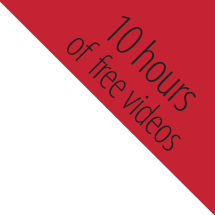In September 1994, I took three days off from my day job in New York, and spent them teaching color correction to six people in Atlanta. We were using Photoshop 3, with no adjustment layers, no multiple undo, no actions, and computers with 16 mb RAM.
Sterling Ledet gave the name “Applied Color Theory” to the class. The concept was that we learn by seeing how others approach the same originals that we do, and whether we prefer their results to our own. When the entire group decided unanimously that a certain version was bad or good, we took that as an indication that it was, in fact, bad or good. When there was disagreement, we discussed why we disagreed and how a client might take either position. And, we decided that we would not be limited to eight hours a day: the sessions would be long, and tiring. For three days, one would eat, sleep, and correct color—nothing more.
The reactions to that first class were so positive that we scheduled another, and then another one after that, and so on. By the time I decided to wind down my career a few years back, Applied Color Theory had been offered more than two hundred times, in close to a dozen different countries, in four different languages.
And never the same way twice. Every group has its own character, faces its own challenge, exults in its own successes. I never got tired of it, because I never found it repetitious.
As time went on, the curriculum changed. Exercises were replaced when more instructive ones were found. But a few have stood the test of time. Of the dozen images that today’s classes work on in the first day and a half, three date from the last century, due to their consistently high ratings on evaluations that ask the students which images they found most useful.
In 2008 the curriculum was overhauled to emphasize the Picture Postcard Workflow, which of course was a work in progress at that time. Classes got to play with early versions of the PPW panel, and in 2011, due to the increasing complexity of work, we expanded the format to four days.
I announced semi-retirement about this but still teach the class in the U.S. one or two times per year. This year, the dates are:
• ATLANTA, Wednesday, April 27 through Saturday, April 30, 2016.
• SAN DIEGO, Wednesday, August 17, through Saturday, August 20, 2016.
The four-day class remains the fastest way that a professional—or someone who wishes to produce professional quality work—can upgrade color correction skills. It’s a big investment in many respects, but it’s also been a life-changing experience for many over the years. If you’d like to consider signing up, click here.


{ 0 comments… add one now }